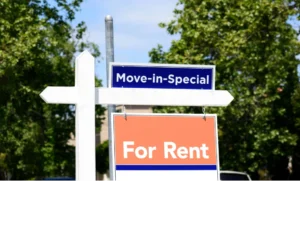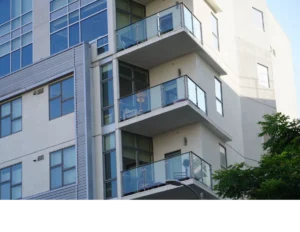Unlock multifamily growth during budget season.

Budget Season: A Strategic Opportunity for Multifamily Rental Growth
Learn strategies to optimize operations, invest wisely, and build compelling business cases for long-term success.
As peak moving season, typically May through September, winds down, multifamily property owners and managers know that it’s time for budget season. Traditionally viewed as a period of belt-tightening and number-crunching, budget season in the multifamily rental industry is evolving into an opportunity for strategic growth and investment. By shifting their perspective, savvy multifamily property professionals can position their assets for long-term success and competitive advantage.
In this blog, we’ll discuss:
- Challenges with Modern Budget Season
- Optimizing Your Current Operations for Efficiency
- Key Strategic Investment Areas to Consider for Multifamily Rental Growth
- Building a Compelling Business Case
- Optimizing Your Budget for Maximum ROI with Apartment List
Understanding the Challenges with Modern Budget Season
Budget season has evolved into a high-stakes balancing act for property management teams. Today’s owners demand laser-focused attention on every dollar spent. Why? Rent growth is decelerating from the double-digit increases seen in 2021 – year-over-year rent growth currently stands at -0.8 percent and has now been in negative territory for over a full year.
When you couple that with economic uncertainties like rising interest rates, potential recession fears, and geopolitical tensions, the pressure to deliver strong returns while managing costs is at an all-time high.
Every budget line item now faces intense scrutiny. Owners are probing deeper and property management teams must demonstrate clear return on investment (ROI) or align spending with broader business goals. While these challenges might tempt some to adopt a purely defensive, cost-cutting posture, such an approach can be short-sighted and potentially harmful to long-term growth and competitiveness.
Optimizing Your Current Operations for Efficiency
It’s important to first take a step back and optimize your current operations. By identifying areas for expense reduction, you can free up funds for reinvestment opportunities like the ones mentioned later in this blog.
Consider these six strategies to optimize for efficiency:
- Conduct a Thorough Expense Analysis: This involves reviewing all expense categories, like utilities, maintenance, marketing, and others line by line to pinpoint opportunities for cost savings. Expense management software can streamline this process and help identify trends over time.
- Leverage Vendor Management Platforms: Tools like Revyse can streamline vendor relationships and generate significant cost savings by offering benefits such as improved contract management, reduced payment processing time, and better visibility into vendor performance. They can potentially unlock hundreds of thousands of dollars in savings annually in the most extreme cases.
- Automate Routine Tasks: Automation can free up valuable time, allowing for team members to focus on more strategic initiatives. Tasks like tour scheduling, applicant vetting, lease renewals, rent collection, and maintenance requests are prime candidates for automation. AI and machine learning can further enhance automation capabilities. However, ensure a smooth transition by providing proper employee training to address any concerns.
- Implement Energy-Saving Measures: Consider not only major upgrades but also simple changes like installing programmable thermostats or motion-sensor lights. Additionally, energy audits can identify areas for further improvement. Highlighting the energy efficiency of your property can also attract environmentally conscious renters, giving you a competitive edge.
- Optimize Your Supply Chain: This involves streamlining procurement processes and negotiating better terms with suppliers. Leverage your purchasing power by exploring group buying or bulk ordering opportunities. Building strong relationships with reliable suppliers is also key.
- Benchmark Performance: Regularly compare your KPIs against past performance and industry standards. Track things like occupancy rates, rent-to-expense ratios, and turnover rates. Setting realistic goals and measuring progress over time allows you to make data-driven decisions that will ultimately aid in optimizing your operations for efficiency.
Free Rental Application
Get 20 Rental Forms for FREE, including a rental application.
Key Strategic Investment Areas to Consider for Multifamily Rental Growth
The key to thriving during budget season is to reframe it as a strategic investment period rather than solely a cost-cutting exercise. By identifying key areas for growth and building compelling business cases, property owners and managers can build a foundation for long-term success.
Here are five strategic investment areas to consider:
1. Technology
The right technology is no longer a nice-to-have; it’s a must-have for modern multifamily operators. By investing in the right tools, you can streamline operations, enhance resident experiences, and unlock valuable data insights.
- Property Management Software: A robust property management system can automate routine tasks, improve communication, and provide essential data for informed decision-making. Look for vendors that offer features like online rent payments, maintenance request tracking, and financial reporting. There are a number of players in this space including Yardi, Buildium, RealPage, Propertyware, and AppFolio – however, it’s important to select a vendor based on your business’s specific needs.
- Smart Leasing: Platforms like Apartment List and its GenAI sales assistant Lea Pro can revolutionize the leasing process by automating lead management, scheduling tours, and collecting applications. This can significantly reduce vacancy rates and increase revenue. Also consider upgrading your leasing with virtual tours to save time for both renters and property managers alike and enhance the decision-making process.
- Resident Apps: Empower your residents with a mobile app that allows them to pay rent, submit maintenance requests, access community amenities, and stay informed about property news. A well-executed app can enhance resident satisfaction and build a strong sense of community. The resident app market is rapidly evolving, some potential vendors to consider include: Livly, Flamingo, VTS Rise, and Funnel.
- AI-Driven Analytics: Leverage the power of artificial intelligence to uncover hidden patterns in your data. AI-powered analytics can help you optimize pricing, predict maintenance needs, and identify resident preferences. Potential vendors to consider include Markerr, LeaseLogic, and Intelligo. Ensure the platform can integrate with your existing property management system and data sources.
2. Amenities
Amenities must align with evolving renter expectations. Today’s renters, shaped by experiences with leading consumer brands, demand seamless, personalized, and always-on interactions. By curating compelling amenities, you can attract and retain top-tier residents while commanding premium rents.
- Fitness Centers: Transform your fitness center into a wellness oasis that caters to 24/7 lifestyles. Offer virtual and on-demand fitness classes to accommodate diverse schedules.
- Outdoor Spaces: Create versatile spaces that foster community and relaxation. Consider amenities like outdoor Wi-Fi, charging stations, and flexible seating arrangements to meet the needs of today’s connected residents.
- Co-working Lounges: Design your co-working space as a dynamic hub for productivity and collaboration. Offer amenities like soundproof phone booths, focus rooms, and event space to cater to various work styles.
- Smart Home Technology: Embrace the power of personalization by offering smart home features that provide residents with control and convenience. Leverage data-driven insights to understand resident preferences and tailor amenity offerings accordingly.
- Enhanced Access and Parking: Create a seamless resident journey with advanced access control systems, electric vehicle charging stations, and convenient parking options. Consider offering package lockers and concierge services to simplify daily life.
- Smart Access Control: Implement keyless entry systems and mobile access for added convenience and security. Offer options for temporary access for guests or service providers, enhancing both resident and property management efficiency.
3. Team Development
Your team is the cornerstone of your property’s success. As the industry shifts towards centralization, the role of your team becomes even more critical. By empowering your staff with the right skills and knowledge, you can successfully navigate this transition and unlock new opportunities for growth.
- Targeted Training: Equip your team with the knowledge and skills to excel in their roles. Offer ongoing training in role-based skills like customer service, leasing techniques, and property maintenance while also emphasizing those needed for centralized operations like data management, and cross-functional collaboration.
- Career Path Development: Invest in your team’s growth by creating clear career paths and opportunities for advancement. Encourage staff to pursue industry certifications that enhance their expertise and your property’s reputation.
- Leadership Cultivation: Develop high-potential employees to become future leaders who can effectively oversee centralized operations. Provide training on strategic thinking, change management, and team building.
- Employee Well-being: Create a positive and supportive work environment through team-building activities, employee recognition programs, and wellness initiatives. A happy and engaged team is more productive and delivers exceptional resident experiences.
By aligning your staff development strategy with your centralization initiatives, you can create a more efficient, scalable organization. Remember to prioritize a bottom-up approach, starting with operational changes before implementing technology solutions.
4. Energy Efficiency
Embrace sustainability to boost your bottom line and attract eco-conscious renters. By prioritizing energy efficiency, you’ll not only contribute to a greener future but also strengthen your property’s financial performance.
- Illuminate Savings: Swap out traditional bulbs for energy-efficient LEDs to reduce electricity consumption and maintenance costs.
- Optimize Climate Control: Upgrade HVAC systems with energy-efficient models, smart thermostats, and proper duct sealing to maximize comfort and minimize utility bills.
- Conserve Water Wisely: Install low-flow fixtures and implement smart irrigation systems to reduce water consumption and potential costs.
- Harness Solar Power: Explore solar panel installation to generate clean energy, offset electricity costs, and enhance your property’s green image.
5. Marketing and Branding
With a growing preference for renting over buying, especially among millennials and Gen Z, the multifamily industry is experiencing a transformative shift. By understanding the changing demographics and preferences of your target audience, you can create a compelling brand and effective marketing strategy.
- Visual Storytelling: Create a lasting first impression with professional photography and immersive virtual tours that showcase your property’s unique character and appeal to today’s renters.
- Content Mastery: Develop engaging content that resonates with your target audience, highlighting the benefits of renting and the lifestyle advantages your property offers.
- Strategic Partnerships: Collaborate with local businesses that align with the preferences of your target demographic, creating a vibrant and desirable community.
- Reputation Excellence: Protect and enhance your property’s online reputation by actively managing reviews and leveraging reputation management tools to attract new residents and retain existing ones.
Tailoring your marketing efforts to the evolving needs and desires of modern renters, you can build a strong brand that aids in achieving long-term success for your assets.
Building a Compelling Business Case
To secure budget approval for strategic investments, it’s imperative to demonstrate a clear path to ROI. Compelling business cases quantify the benefits for your key audiences, align your proposed initiatives with broader pre-existing business goals, and benchmark against competitors.
Some investments offer long-term returns, however, be sure to present a well-rounded case that also identifies both the potential risks and rewards.A strong, data-driven business case is crucial for securing resources and buy-in from your superiors. Be sure to:
- Assess current property performance using key financial metrics like occupancy rates, average rent, net operating income (NOI), and ROI.
- Highlight operational efficiency opportunities with metrics like turnover rates, maintenance costs, and energy consumption
- Conduct a market analysis including competitive comparisons and demographics that should inform strategic decisions.
- Understand resident satisfaction, demographics, and lease renewals to tailor your offerings.
- Project investment performance with forward-looking metrics like projected cash flow, internal rate of return (IRR), and payback period.
Presenting a well-structured, data-driven business case will allow you to make a compelling argument for strategic investments that drive your multifamily assets forward in achieving rental growth.
The most successful multifamily professionals view budget season not as a time of limitations, but as a launchpad for new possibilities. With careful consideration of the right strategic investments, you can create a budget that not only meets immediate needs but positions your property for lasting success in an ever-evolving market.
Source: Apartment List













 Accessibility
Accessibility